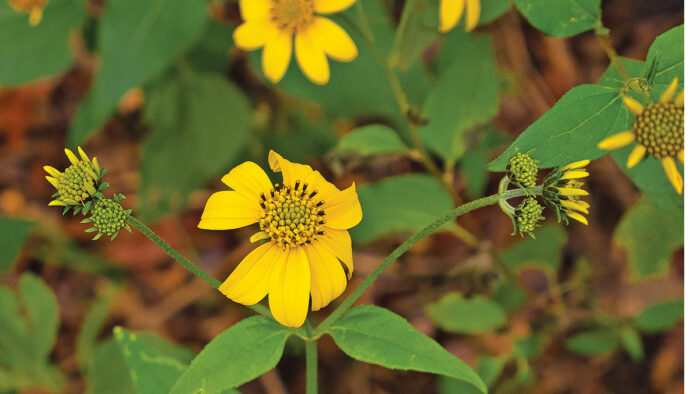
As William Cullina mentions in his article on plants for birds, the sad reality is songbirds are disappearing: “Habitat loss, pesticides, and the accompanying decline of insect populations have contributed to a loss of 25 to 30 percent of North American songbirds since 1970.”
But gardeners can help, and it just requires buying new plants! By growing more plants that help support local bird populations, you can do your part. Find plants for birds in the Southern Plains below, and discover even more plants for birds in William’s article, Native Plants for the Birds.
1. Turk’s Cap
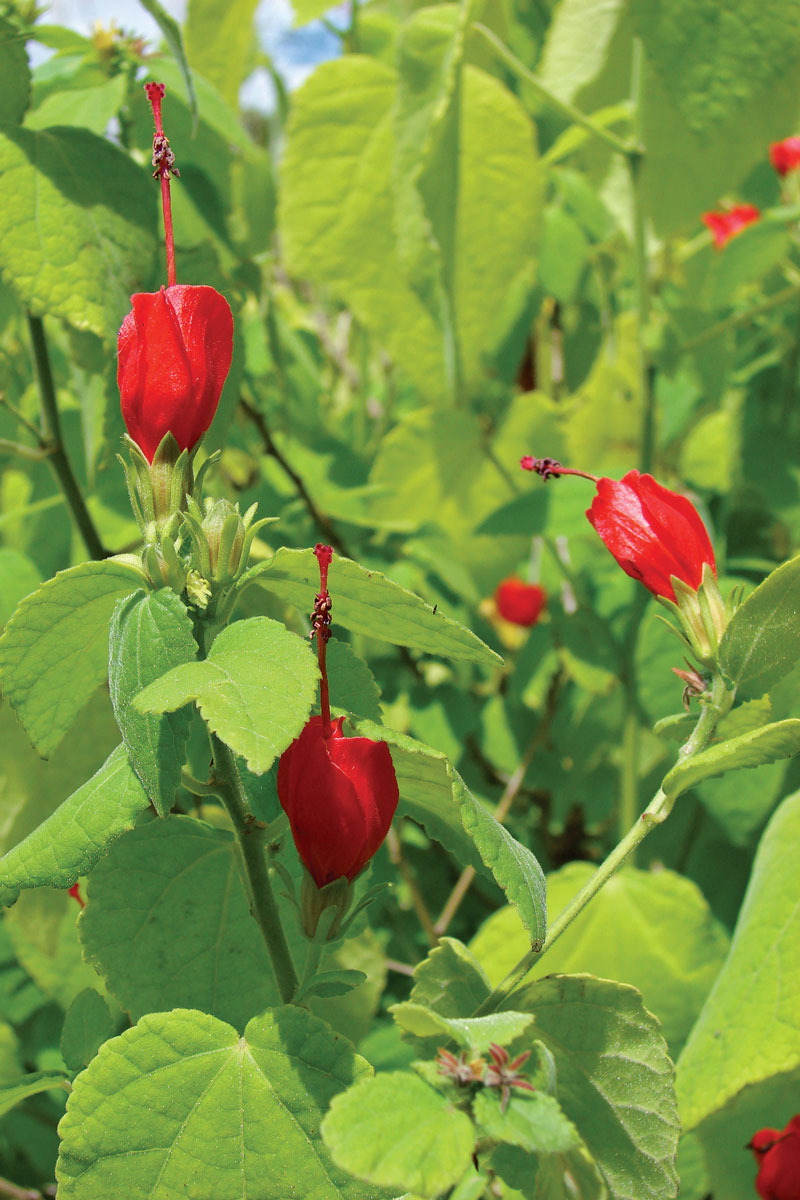
Name: Malvaviscus arboreus var. drummondii
Zones: 7b–11
Size: 2 to 4 feet tall and wide
Conditions: Partial to full shade; moist, well-drained soil
Native range: Southeastern United States
Turk’s cap takes the blazing temperatures of Texas in stride, presenting a showy display of magnetic red blooms for months, with the most prolific blooming in the heat of summer and early fall. Turk’s cap flowers are distinctive and striking. The flowers never fully open, yet they are a favorite nectar source for ruby-throated hummingbirds as well as many butterflies, moths, and insects. The large palmate leaves provide dense cover for birds and small mammals. The Spanish name for this plant, mazanilla (“little apple”), describes its 1-inch red fruit, which is edible and provides a food source for birds.
2. Agarita
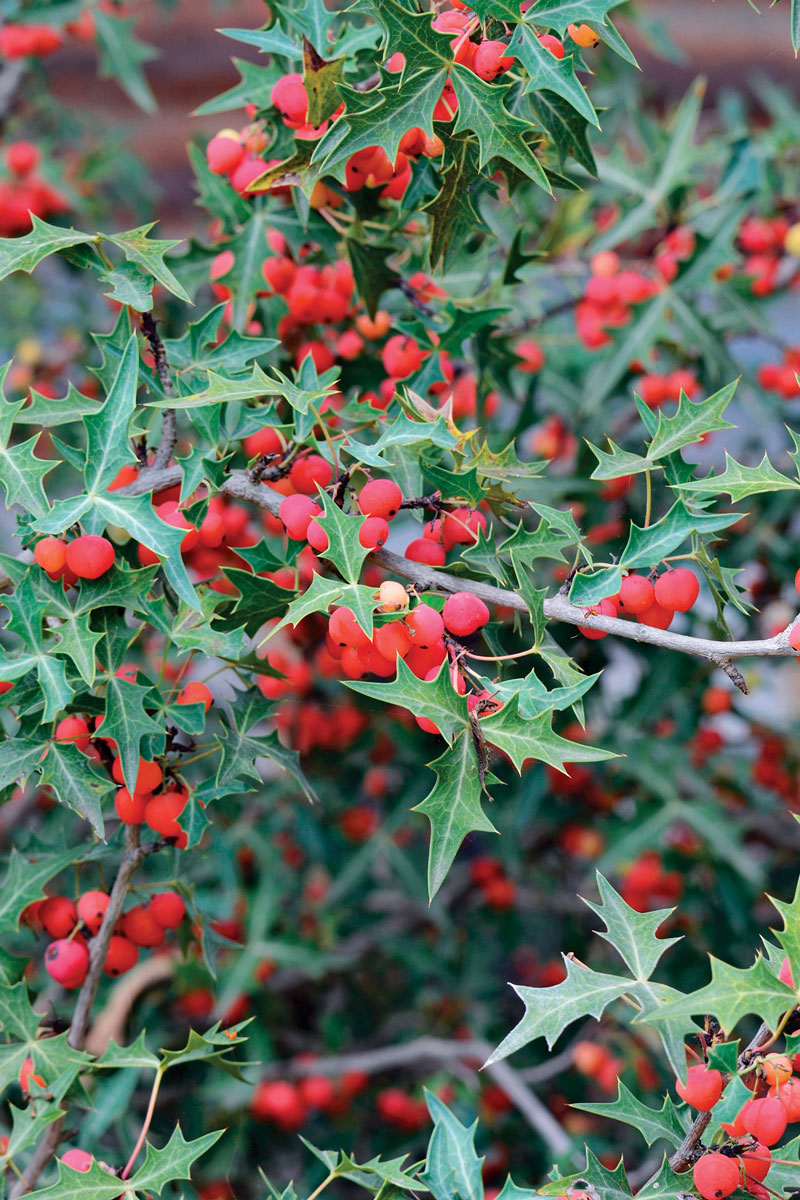
Name: Mahonia trifoliolata
Zones: 7–9
Size: 3 to 6 feet tall and wide
Conditions: Full sun to partial shade; well-drained loam, clay, caliche, or limestone soil
Native range: Southwestern United States
The unique holly-like evergreen leaves of agarita add interesting texture to the garden all year long. The gray-green foliage radiates life amid the browns of winter. Thick, barbed leaves are complemented by fragrant yellow, buttercup flowers that are some of the first to bloom in our region in spring. This early flush is followed by bright red berries that are a favorite of songbirds
and can be made into a delicious jelly or wine. The sharp leaves have the added benefit of being a natural barbed wire, providing an effective and safe shelter for birds—specifically quail—and small mammals. This is an interesting, underutilized evergreen.
3. Plateau Goldeneye

Name: Viguiera dentata
Zones: 8–11
Size: 3 to 6 feet tall and wide
Conditions: Full sun to partial shade; wide range of well-drained soil types
Native range: Southwestern United States, Mexico, Central America, Cuba
This member of the sunflower family brings a cheery golden-yellow autumn color to any perennial border. Numerous miniature sunflowers shine on top of long stalks as they extend up above the mass of foliage below. This dappled yet dense foliage provides excellent cover for birds. In full sun it matures to a compact 3 feet in height but will grow to 6 feet in shadier areas. When allowed to stand through the winter, the blooms provide a bounty of seeds to many granivorous birds, including the lesser goldfinch. Plateau goldeneye is also a larval host plant for two butterfly species.
4. Little Bluestem
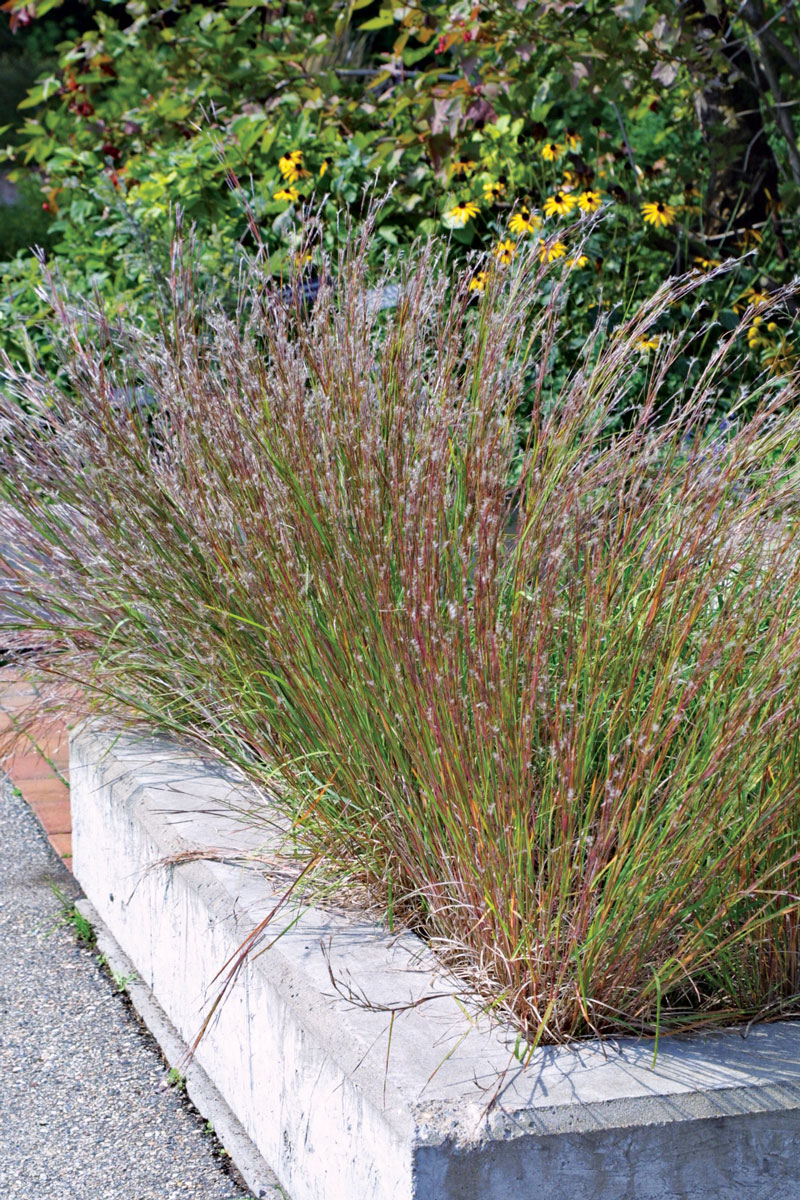
Name: Schizachyrium scoparium
Zones: 3–9
Size: 2 to 4 feet tall and 2 feet wide
Conditions: Full sun to partial shade; wide range of well-drained soil types
Native range: Alberta to Quebec, all lower 48 states except Oregon and Nevada
This native grass is a rewarding garden plant, with innumerable benefits to wildlife. The name “little bluestem” denotes the blue-green foliage in summer, but winter brings a different artistic display. The bluish foliage melds into a deep copper that is complemented by silvery seed puffs that glisten in the soft winter light. The seeds attract granivorous birds, and the foliage is utilized by birds and native bees for nesting materials. Its clumping habit makes it a refuge for birds seeking cover to rest. Little bluestem is the larval host plant for six species of butterflies. Their caterpillars serve as the main and essential source of protein for growing baby birds.
Amy Galloway is a horticulturist at the Lady Bird Johnson Wildflower Center in Austin, Texas.
Fine Gardening Recommended Products

Scotts Cordless Grass-Shear/Shrub-Trimmer Combo
Fine Gardening receives a commission for items purchased through links on this site, including Amazon Associates and other affiliate advertising programs.
- 13.5 x 3 x 5 inches
- Uses a 7.2-Volt 2Ah high-capacity built-in lithium-ion battery; Includes a fast charger

ARS Telescoping Long Reach Pruner
Fine Gardening receives a commission for items purchased through links on this site, including Amazon Associates and other affiliate advertising programs.

Johnny’s Selected Seeds Connecta® Cultivation Kit
Fine Gardening receives a commission for items purchased through links on this site, including Amazon Associates and other affiliate advertising programs.




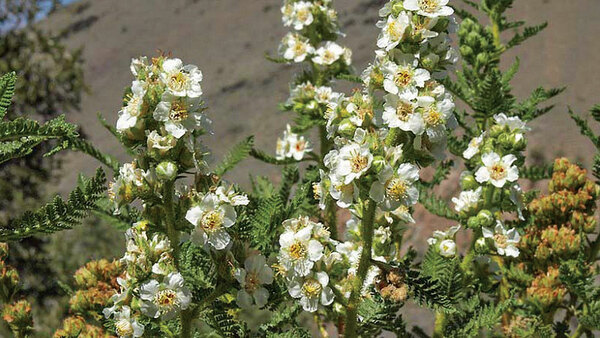













Comments
Log in or create an account to post a comment.
Sign up Log in